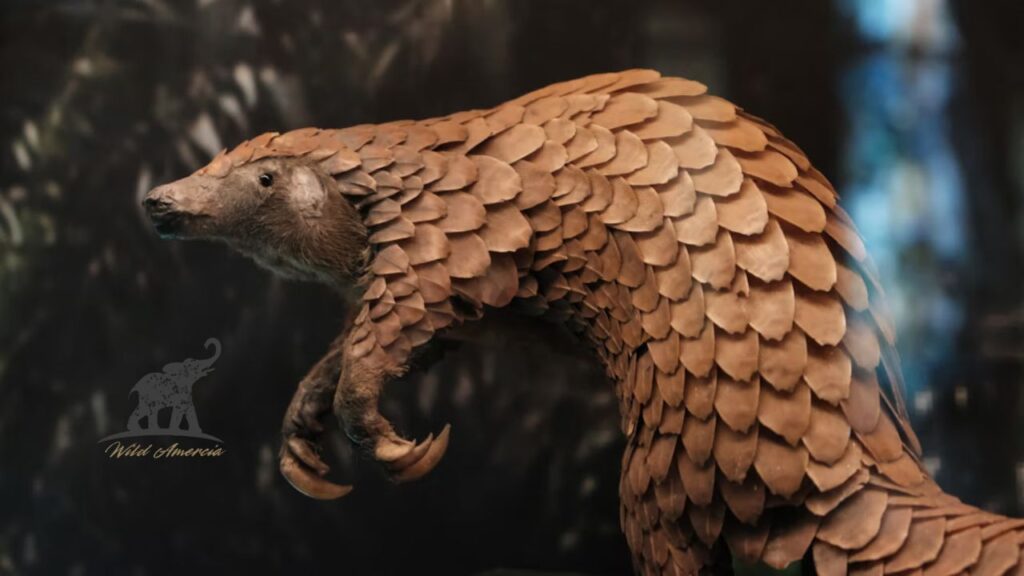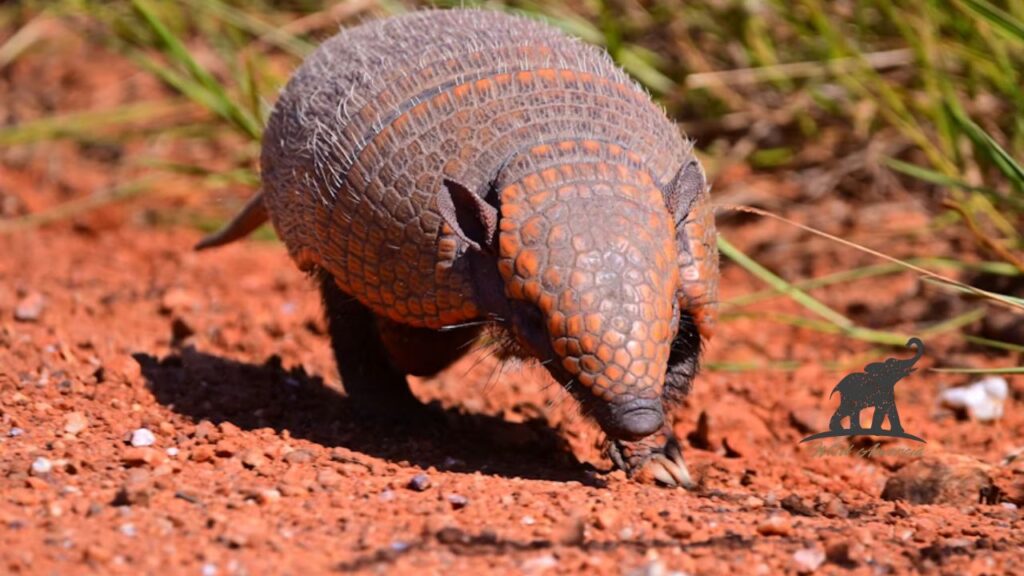At first glance, you might think you’re seeing double. Two unique mammals, covered head to toe in protective armor, rolling into a ball when threatened. The pangolin vs armadillo matchup seems to pit two nearly identical creatures against each other. But look closer, and you’ll discover a world of difference between these fascinating animals. They are a spectacular example of convergent evolution, where unrelated species independently develop similar traits to adapt to their environments.
While they share a love for insects and a suit of armor, pangolins and armadillos are not closely related at all. They belong to entirely different orders, live on separate continents, and have distinct features that make each one special. This guide will walk you through the key differences, from their armor and diet to their conservation status, settling the great pangolins vs armadillos debate once and for all.
Quick Comparison: Pangolin vs. Armadillo
To get started, let’s break down the most important distinctions in a simple table.
| Feature | Pangolin | Armadillo |
| Scientific Order | Pholidota | Cingulata |
| Armor Material | Keratin (like fingernails) | Bony plates (osteoderms) |
| Continents | Asia and Africa | North and South America |
| Diet | Specialized insectivore (ants & termites) | Generalist insectivore (insects, grubs, worms) |
| Teeth | None | Simple peg-like molars |
| Tongue | Extremely long, up to 16 inches | Shorter, sticky tongue |
| Defense | Rolls into a tight ball | Varies; some jump, some run, only one rolls up |
| Conservation | Critically Endangered | Least Concern (most species) |
A Deeper Dive into the Differences
Now that we have a high-level overview, let’s explore what truly separates these armored animals. The comparison of pangolin animal vs armadillo reveals fascinating adaptations that have allowed each to thrive in its own corner of the world.
The Great Armor Debate: Pangolin vs Armadillo Armor
The most iconic feature of both animals is their armor, but it’s fundamentally different.
Pangolin Scales: A Suit of Keratin
A pangolin’s armor is its most striking feature. It is covered in large, overlapping scales made of keratin—the same protein that makes up human hair and fingernails. These scales are incredibly sharp and tough, providing a formidable defense against predators like lions, tigers, and leopards.

When a pangolin feels threatened, it curls into an almost impenetrable ball. The sharp edges of its scales act as a cutting weapon against anything that tries to pry it open. This defense is remarkably effective. One user review from a wildlife documentary viewer noted, “I saw a video of a lion trying to get at a pangolin for nearly an hour. It just couldn’t break through the armor. It was incredible to watch.” This unique keratin armor makes the pangolin one-of-a-kind among mammals.
Armadillo Shell: A Bony Shield
An armadillo’s armor, called a carapace, is made of bony plates called osteoderms that grow from the skin. These plates are covered by a layer of leathery skin. The carapace is hinged with bands of flexible skin across the back, which gives the armadillo some mobility.

Contrary to popular belief, only one of the 21 species of armadillo—the three-banded armadillo—can roll itself into a perfect ball. Most other species, like the common nine-banded armadillo, will flee, jump straight into the air to startle a predator, or quickly dig a burrow to escape. Their armor is more of a protective shield than an all-encompassing defensive sphere. In a pangolin vs armadillo fight scenario, the pangolin’s rolling defense is arguably more complete.
Geographical Divide: Where Do They Live?
You will never find a pangolin and an armadillo living in the same wild habitat. They are separated by entire oceans.
- Pangolins: These mammals are found exclusively in Asia and Africa. There are four species in each continent. Some, like the ground pangolin vs armadillo, are terrestrial and dig burrows. Others, like the tree pangolin vs armadillo, are arboreal and live in trees.
- Armadillos: These animals are native to the Americas. The nine-banded armadillo is the only species found in the United States, primarily in the southern states. The other 20 species, including the giant armadillo vs giant pangolin, live throughout Central and South America.
So, if you see an armored creature digging up your lawn in Texas, it’s an armadillo. A similar-looking animal in Nigeria is a pangolin. The question of diferencia entre pangolin vs armadillo (difference between pangolin and armadillo) is often a matter of geography.
What’s on the Menu? A Tale of Two Diets
Both are insectivores, but their tastes are quite different. This dietary preference is a major point of divergence in the pangolin vs armadillo discussion.
Pangolins: The Ant and Termite Specialists
Pangolins are highly specialized eaters. Their diet consists almost exclusively of ants and termites. They use their powerful front claws to rip open nests and mounds. Their most amazing tool is their tongue, which can be longer than their body! It’s covered in sticky saliva and can be flicked in and out rapidly to slurp up thousands of insects in a single feeding. Pangolins have no teeth; they “chew” their food using small stones and keratinous spines inside their stomachs. The Indian pangolin vs armadillo comparison highlights this specialization, as the Indian pangolin is a master at raiding termite mounds.
Armadillos: The Opportunistic Foragers
Armadillos are much more generalist in their diet. While they love insects, grubs, and worms, they are not as picky as pangolins. They will also eat small reptiles, amphibians, bird eggs, and even some plant matter and carrion. They use their strong sense of smell to locate food underground and dig it up with their claws. Unlike pangolins, armadillos have simple, peg-like teeth in the back of their mouths to help them grind up their food.
Are They Related? Family Tree Mysteries
A common question is whether the pangolin vs armadillo related status is close. The simple answer is no. Their visual similarities are a classic case of convergent evolution, not shared ancestry.
- Pangolins are in the order Pholidota. Their closest living relatives are surprisingly not other armored mammals but carnivorans like cats, dogs, and bears.
- Armadillos belong to the order Cingulata, which is part of the superorder Xenarthra. This group also includes sloths and anteaters.
This brings up another frequent comparison: pangolin vs armadillo vs anteater. While armadillos and anteaters are related, pangolins are in a completely different branch of the mammal family tree. Trying to group pangolin vs armadillo vs anteater vs aardvark is even more complex, as the aardvark is also in its own separate order (Tubulidentata). The armadillo vs aardvark vs pangolin comparison shows three distinct evolutionary paths leading to ant-eating mammals.
Conservation Status: A Tragic Difference
Perhaps the most critical difference in the pangolins vs armadillo discussion is their conservation status.
Pangolins: The World’s Most Trafficked Mammal
This is where the story takes a somber turn. All eight species of pangolin are threatened with extinction, and three are listed as Critically Endangered. They are hunted relentlessly for their scales, which are wrongly believed to have medicinal properties in some cultures, and for their meat, which is considered a delicacy. Their defensive rolling mechanism makes them tragically easy for poachers to simply pick up. Tens of thousands of pangolins are trafficked each year, making them the most illegally traded mammal on the planet.
Armadillos: Mostly Thriving
In contrast, most armadillo species are doing relatively well. The International Union for Conservation of Nature (IUCN) lists the majority of the 21 species as “Least Concern.” Their populations are stable, and some, like the nine-banded armadillo, are even expanding their range northward. While some species like the giant armadillo are more vulnerable due to habitat loss, the group as a whole is not facing the same existential threat as pangolins.
Clearing Up Confusion: Is a Pangolin the Same as an Armadillo?
Given all the differences, it’s clear the answer to “pangolin vs armadillo es lo mismo?” (is a pangolin the same as an armadillo?) is a firm no.
Looking at a pangolin vs armadillo image side-by-side reveals the key visual cues. A pangolin’s scales are distinct and pinecone-like, whereas an armadillo’s carapace is a smoother, more shell-like structure with visible bands. Their head shapes, claws, and tails are also quite different upon closer inspection. The armadillo vs ground pangolin comparison is a good example, as both are land-dwellers, yet their body structures are fundamentally unalike. Similarly, the arboreal abilities of a tree pangolin are unmatched by any armadillo, making the armadillo vs tree pangolin matchup a clear win for the pangolin in the canopy.
Conclusion: Two Unique Survivors
The pangolin vs armadillo comparison is a fascinating study in evolution. It shows how two unrelated animals on opposite sides of the globe developed similar armor to solve the same problem: how to avoid being eaten. From their bony plates vs. keratin scales to their distinct diets and family trees, the armadillo and the pangolin are a testament to nature’s creativity.
While the armadillo continues to thrive, the pangolin’s future is perilously uncertain. Understanding the differences between these creatures is more than just a fun biological exercise; it’s a crucial step in recognizing the unique plight of the pangolin. They are not interchangeable armored animals but distinct species, one of which desperately needs our help to survive.
Frequently Asked Questions (FAQs)
Can a pangolin beat an armadillo?
In a hypothetical pangolin vs armadillo fight, it would depend on the situation. A pangolin’s sharp scales and ability to roll into a tight ball offer a superior defense. However, an armadillo is generally larger and stronger. Given they live on different continents, they would never meet in the wild. The giant pangolin vs armadillo matchup would be particularly interesting, but remains purely speculative.
Are armadillos related to anteaters?
Yes, they are. Armadillos, anteaters, and sloths all belong to the same superorder, Xenarthra. This makes the pangolin vs armadillo vs anteater grouping interesting because two are related while one is not.
Why are pangolins so endangered?
Pangolins are the most trafficked mammals in the world. They are illegally hunted for their meat, which is considered a luxury food in some parts of Asia, and for their keratin scales, which are used in traditional medicine despite having no proven medicinal value.
Can all armadillos roll into a ball?
No, this is a common misconception. Only the two species of three-banded armadillos can completely enclose themselves by rolling into a ball. The other 19 species use other methods to defend themselves, such as running, digging, or jumping.
Admin Recommendation
Cottonmouth Snakes in North Carolina (NC): Key Facts
The Fascinating World of Arctic Fox Fur












